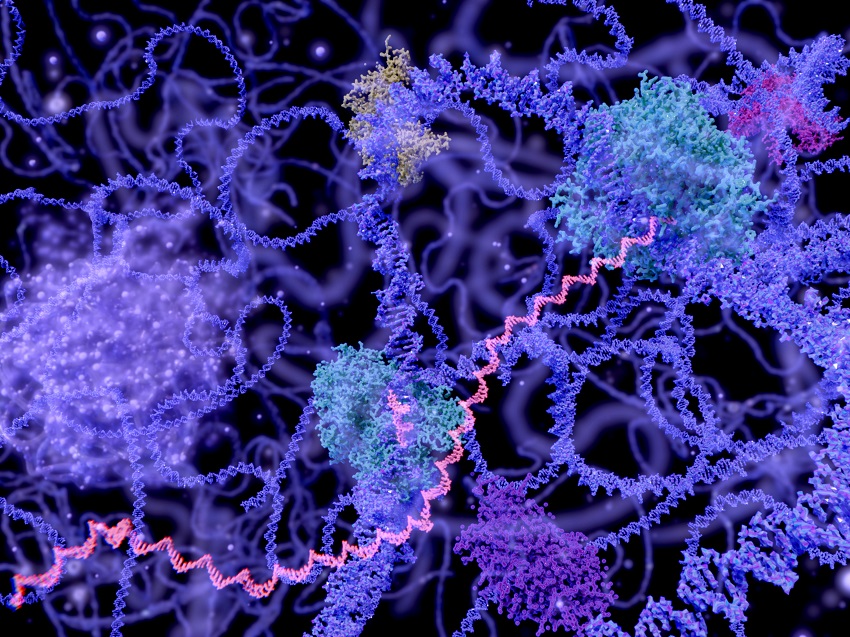Did you know that only 2% of the human genome actually creates proteins? Scientists are still not sure what the other 98% does, exactly.
A new paper about fruit fly genetics sheds some light on how researchers can begin to look into this “Dark Side” of the genome.
To fully understand this study, you need a little background on the basics of DNA:
DNA → RNA → Proteins
In the form of DNA most widely taught in high schools, there is a “mantra”. DNA makes RNA which in turn creates Proteins. Proteins are the cellular machines that carry out all the functions of a cell, from copying the DNA to creating and maintaining a cellular membrane. This is essentially what allows cells to survive and reproduce. Ultimately, this form of storing information in the genome allows the forces of natural selection to work on the genome, selecting only the mutations that allow an organism to survive or reproduce more efficiently.

More specifically, the DNA is broken up into exons and introns. Exons hold the actual information of each protein. The information is stored in “codons” – sets of three nucleotides that specify each amino acid in a protein. The order of amino acids is extremely important to protein function. If an amino acid is missing or is in the wrong order, the function of the protein can be completely altered. So, we know a lot about exons and about how they create proteins.
But, we know a lot less about introns….
DNA doesn’t always make Protein…
Just because introns don’t make proteins does not mean they are not important. Researchers have discovered many uses for introns. Some are used to bind to histones – important structural proteins that allow DNA to be stored in chromosomes. Other introns affect the transcription of DNA by attracting transcription proteins. Introns are also sometimes transcribed into RNA, though these RNA sequences do not go on to become proteins.
In the study, researchers used high-throughput RNA tests (similar to the tests 23andMe and other DNA testing companies use) in order to understand which types of fruit flies were producing which networks of RNA. Researchers found that there was much higher variation within introns than they expected. Their new method, which essentially “reads” the RNA sequences present in a cell or organism, allows the researchers to fully understand which of the DNA introns are being expressed into RNA sequences.
While the exons of the fruit fly are well studied, science still knows very little about the much larger and more complex spaces between them. Hopefully, this new method of scanning and documenting RNA sequences can help us build a big picture of how they influence genetics.
